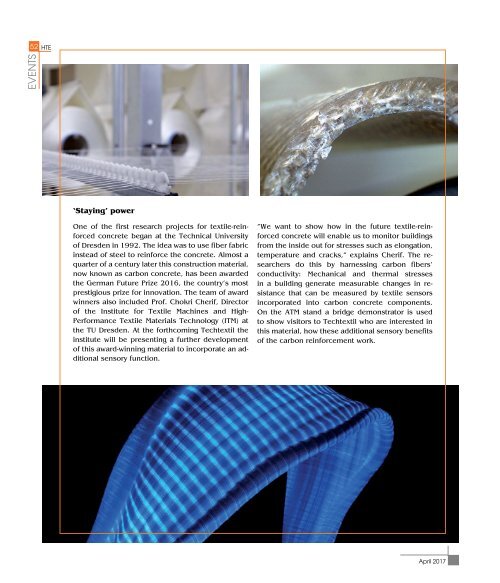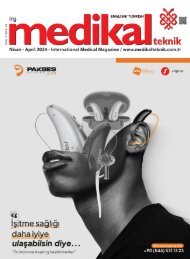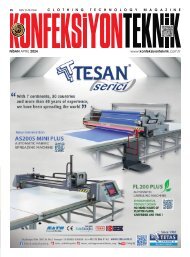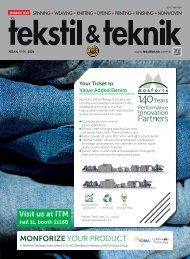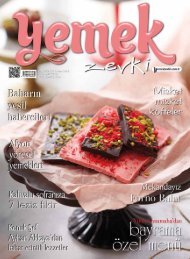International Home Textile Magazine – April’17
You also want an ePaper? Increase the reach of your titles
YUMPU automatically turns print PDFs into web optimized ePapers that Google loves.
52<br />
HTE<br />
EVENTS<br />
‘Staying’ power<br />
One of the first research projects for textile-reinforced<br />
concrete began at the Technical University<br />
of Dresden in 1992. The idea was to use fiber fabric<br />
instead of steel to reinforce the concrete. Almost a<br />
quarter of a century later this construction material,<br />
now known as carbon concrete, has been awarded<br />
the German Future Prize 2016, the country’s most<br />
prestigious prize for innovation. The team of award<br />
winners also included Prof. Chokri Cherif, Director<br />
of the Institute for <strong>Textile</strong> Machines and High-<br />
Performance <strong>Textile</strong> Materials Technology (ITM) at<br />
the TU Dresden. At the forthcoming Techtextil the<br />
institute will be presenting a further development<br />
of this award-winning material to incorporate an additional<br />
sensory function.<br />
“We want to show how in the future textile-reinforced<br />
concrete will enable us to monitor buildings<br />
from the inside out for stresses such as elongation,<br />
temperature and cracks,” explains Cherif. The researchers<br />
do this by harnessing carbon fibers’<br />
conductivity: Mechanical and thermal stresses<br />
in a building generate measurable changes in resistance<br />
that can be measured by textile sensors<br />
incorporated into carbon concrete components.<br />
On the ATM stand a bridge demonstrator is used<br />
to show visitors to Techtextil who are interested in<br />
this material, how these additional sensory benefits<br />
of the carbon reinforcement work.<br />
April 2017


